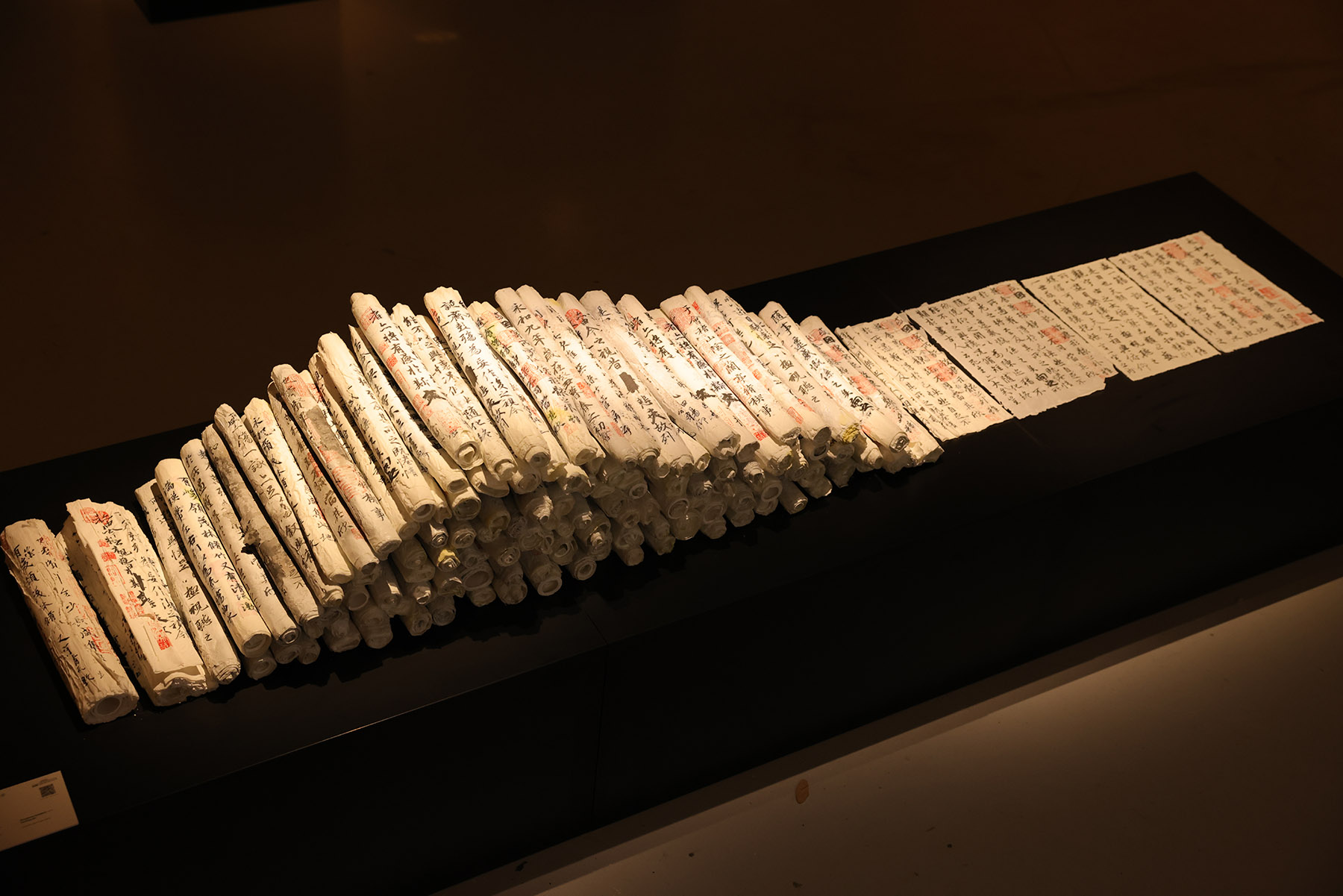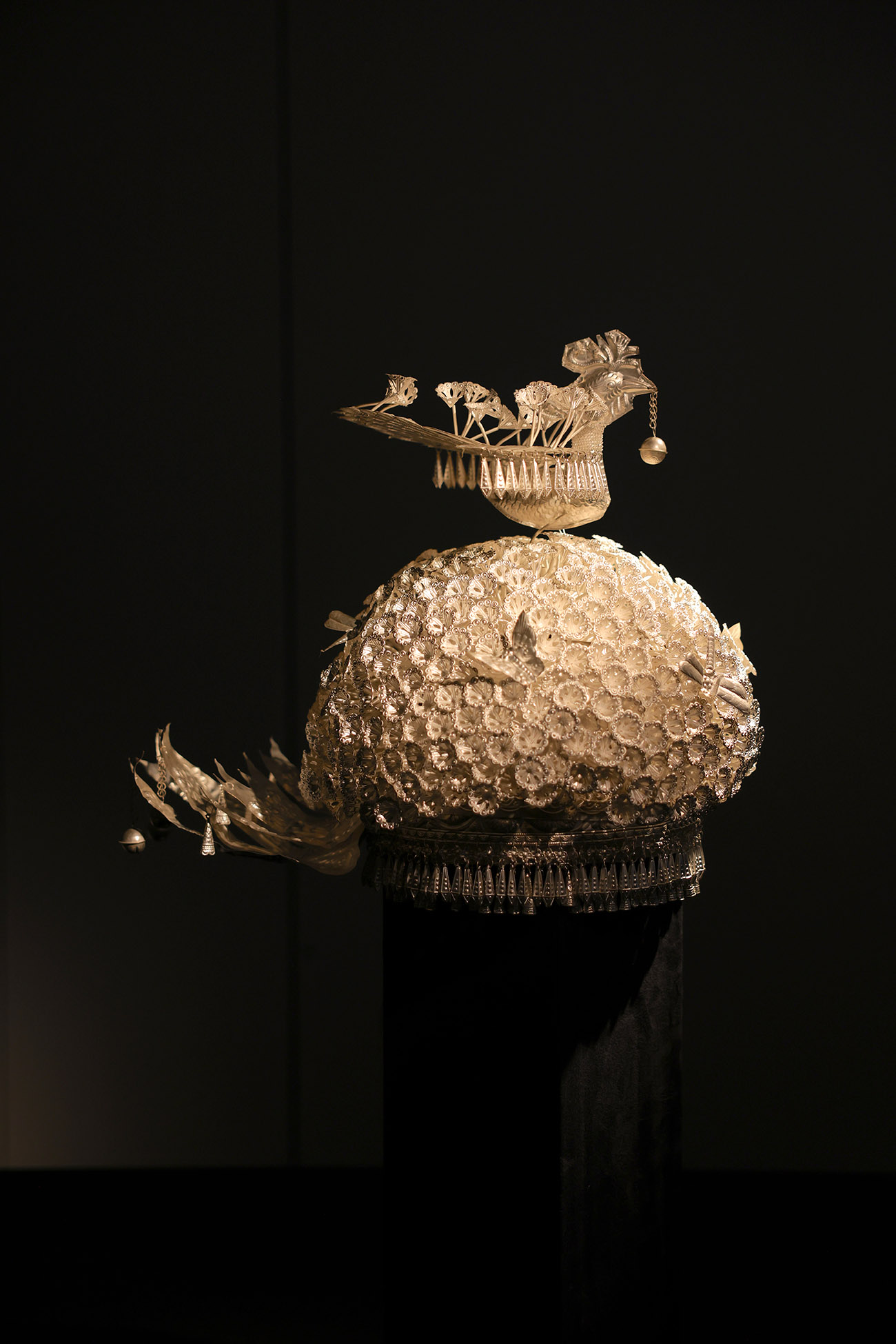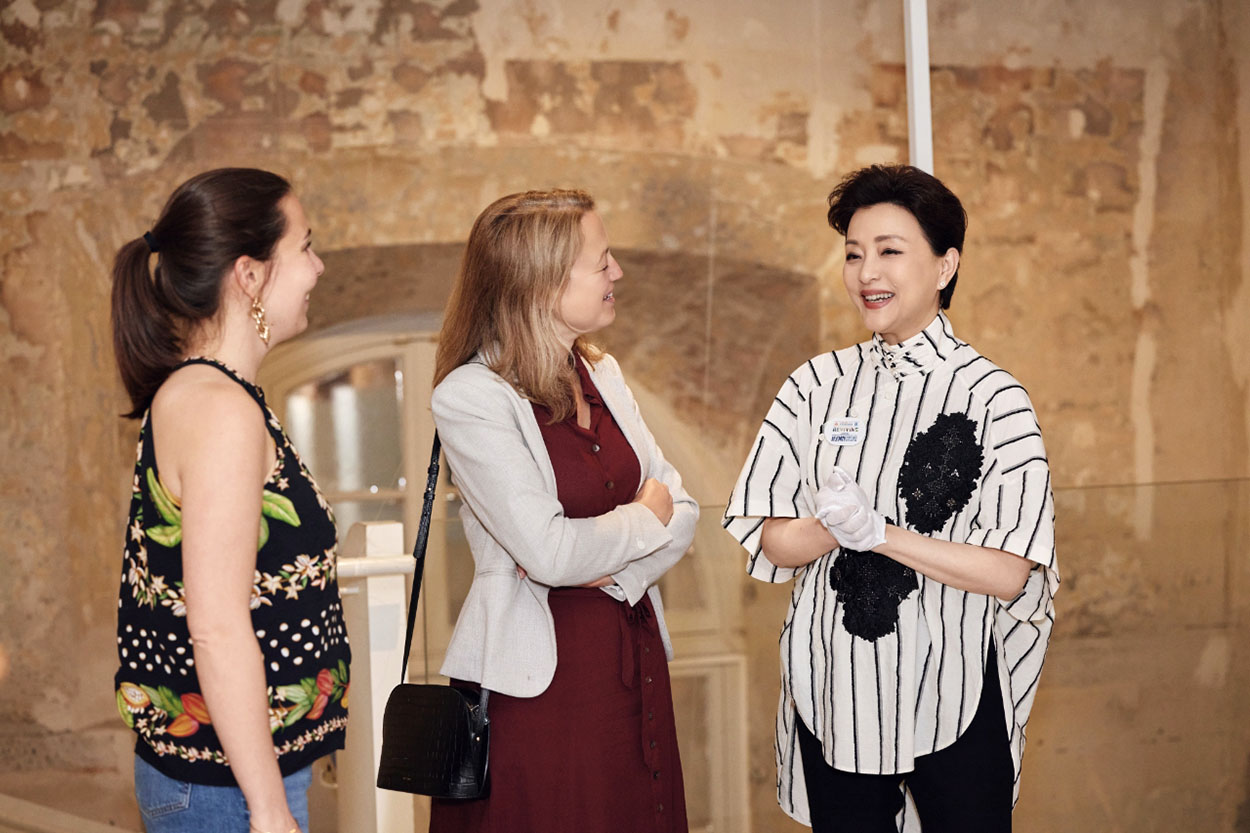Display of Chinese art highlights intricate craftsmanship and long history of exchange, Yang Feiyue reports.

Traditional puppetry, embroidery, New Year woodblock prints and wood carvings are creating a strong Chinese vibe at the Musee des Arts Decoratifs in the western wing of the Louvre Museum in the French capital.
On a large high-definition screen, visitors can glimpse the skills passed down through generations of Chinese artisans that are used to turn the five elements of metal, wood, water, fire and earth into works of art, as well as the way modern inheritors have pulled off a seamless blend of tradition and modernity.
It is part of Exposition Reviving Craft, an ongoing show about aspects of intangible cultural heritage and modern design included in the framework of the China-France Year of Culture and Tourism in 2024 by China's Ministry of Culture and Tourism.
"Cultural and artistic exchange between China and France has a long history. This exhibition aims to present the works of intangible cultural heritage masters and contemporary designers to the world, injecting new vitality into cultural diversity and cross-cultural exchange," says Yang Lan, chair of the Sun Media Group and co-curator of the exhibition, which opened on July 5 and will run until Friday.
READ MORE: Watering the gardens of friendship
"The exhibition follows the concept of the five elements, highlighting the mutual influence, transformation and fusion," Yang says.
Handicrafts such as filigree inlay, woodwork, bamboo weaving, tea making, wine-making, ceramics, and textile embroidery are present to represent those elements, she adds.
"Combining Chinese aesthetics with multimedia and AI presentation technology, the exhibition creates an immersive and interactive experience. It allows the audience to understand the natural and cultural environments of intangible cultural heritage, the creation process, and the emotions it embodies, fostering a sense of empathy," Yang adds.

In the metal space, visitors can try on pieces of jewelry, and even customize them to their taste using artificial intelligence, and learn traditional carpentry via digital demonstrations in the wood space.
The exhibition is hosted by the media company in conjunction with China National Brand, a brand-related news platform, and brings together some 100 pieces by 40 outstanding artisans and designers, as well as 20 participating brands and institutions. It is an opportunity for visitors to see the magnificent millennia-long culture of China.
Walking into the main hall, the metal section is the first to greet one's eyes. A gold mesh crown is placed front and center, immediately giving visitors a good measure of the stunning craftsmanship of ancient Chinese filigree art. The piece is an exact replica of the crown of Emperor Wanli of the Ming Dynasty (1368-1644) that was unearthed in the 1950s.
Dragon patterns coil around the crown, as if possessing a life on their own. At close quarters, the mind boggles at how the piece is composed of hair-thin strands of gold wire, all braided by hand, using a variety of techniques such as wire cutting, arranging, and welding. In particular, thousands of the dragon scales have been modeled out of gold wire measuring 0.2 millimeters in thickness. There are no seams, visible joints or broken threads, making this the epitome of China's gold craftsmanship.
Yang says the metal space aims to vividly present the traditional processes of metal craftsmanship, from casting, forging, engraving, inlaying and filigree to enamel work, and to showcase the skills of Chinese craftsmen and the beauty of their metal artistry.

She says she was impressed by seeing in person how filigree inlay artists can pull a piece of metal into a wire as thin as a strand of hair, a process she witnessed when she was learning about the practice a few years ago.
"At the same time, they have the skill to bend the threads gently around their fingers. Every little dragon on (the crown) is lifelike and awe-inspiring."
Su Dan, vice-curator of the China Intangible Cultural Heritage Museum, says that he has taken a special shine to the unique folk silverware craft of the Miao people, which is used in fashioning silver hats of various styles.
The silver blossom hat on display is decorated with low tassels at the forehead and a lifelike silver sparrow. When the wearer moves, the silver sparrow will tremble slightly, and the tassels sway gently, giving the hat a sense of vitality. About 30 steps were involved in its creation, four of which — wire drawing, wire braiding, carving, and wire coiling — were the most important, according to the exhibition organizers. "The hat is an ordinary person's tribute to life," Su says.
Other highlights of the metal space include Convergence, an artwork made of brass and gold, featuring lifelike figures, posing hand in hand, which symbolizes not only the increasingly close and deep connections between people, but also a shared vision for a better life. The base model was created using 3D printing, shaped through precision casting, and decorated using electroplating.
"We not only witness the pursuit of craftsmanship and its heritage, but also the innovation and individuality of contemporary artisans," Yang says.
In the earth space, embroidery has been chosen to convey the element's traditional connotation of balance and stability.

Yao Jianping, a master of Suzhou embroidery brocade from the Song Dynasty (960-1279), has created a fabric version of the Mona Lisa, the famous oil painting by Renaissance master Leonardo da Vinci. The work takes on a dreamy and mysterious temperament as the artist has used rich colors, to convey the complex light and shadow transitions of the oil painting.
As a form of fine art born in combustion, ceramics are displayed in the fire space, which represents fervor.
The porcelain form of the scroll of Lantingji Xu (Preface to the Collection of Poems of the Orchid Pavilion) by fourth-century calligrapher Wang Xizhi impresses the audience with its volume and novelty. Made by Professor He Qin of the Jingdezhen Ceramic University, it integrates the Xuan paper used for calligraphy with clay and glaze, which is molded, carved, sculpted and painted, conveying the harmony of simplicity and complexity, and the interplay of rusticity and technique.
ALSO READ: A musical French connection
The mortise-and-tenon technique is shown to good effect in the space dedicated to wood, while tea and wine making culture is on display in the water space.
Wang Yin, cultural counselor of the Chinese embassy in France, says that China places great importance on the protection and transmission of intangible cultural heritage, and the exhibition showcases the achievements of heritage protection, inheritance, and innovation in the country, which has breathed new life into ancient crafts through contemporary design.
On the eve of the Paris Olympics, the exhibition intends to show visitors from around the world the vitality of Chinese intangible cultural heritage, the creativity of Chinese designers, and the beauty of China's traditional culture, Wang adds.
Sylvie Correard, CEO of the Musee des Arts Decoratifs, says the exhibition has introduced beautiful items to the Paris audiences, giving them an opportunity to discover and understand different aspects of Chinese cultural output. Correard adds that she hopes there will be more opportunities in the future to work with artists from China.
Contact the writer at yangfeiyue@chinadaily.com.cn


